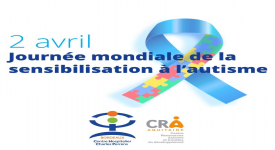Prevalence of Autism Spectrum Disorder and Co-Morbidities in Children and Adolescents: A Systematic Literature Review
Focus (Am Psychiatr Publ). 2024 Apr;22(2):212-228. doi: 10.1176/appi.focus.24022005. Epub 2024 Apr 10.
ABSTRACT
OBJECTIVE: Individuals with autism spectrum disorder often present somatic and/or psychiatric co-morbid disorders. The DSM-5 allows for consideration of additional diagnoses besides ASD and may have impacted the prevalence of co-morbidities as well as being limited in capturing the true differences in prevalence observed between males and females. We describe the prevalence of ASD and frequently observed co-morbidities in children and adolescents (<18 years) in the United States and five European countries.
METHODS: Two systematic literature reviews were conducted in PubMed and Embase for the period 2014-2019 and focusing on the prevalence of ASD and nine co-morbidities of interest based on their frequency and/or severity: Attention Deficit Hyperactivity Disorder (ADHD), anxiety, depressive disorders, epilepsy, intellectual disability (ID), sleep disorders, sight/hearing impairment/loss, and gastro-intestinal syndromes (GI).
RESULTS: Thirteen studies on prevalence of ASD and 33 on prevalence of co-morbidities were included. Prevalence of ASD was 1.70 and 1.85% in U.S children aged 4 and 8 years respectively, while prevalence in Europe ranged between 0.38 and 1.55%. Additionally, current evidence is supportive of a global increase in ASD prevalence over the past years. Substantial heterogeneity in prevalence of co-morbidities was observed: ADHD (0.00-86.00%), anxiety (0.00-82.20%), depressive disorders (0.00-74.80%), epilepsy (2.80-77.50%), ID (0.00-91.70%), sleep disorders (2.08-72.50%), sight/hearing impairment/loss (0.00-14.90%/0.00-4.90%), and GI syndromes (0.00-67.80%). Studies were heterogeneous in terms of design and method to estimate prevalence. Gender appears to represent a risk factor for co-morbid ADHD (higher in males) and epilepsy/seizure (higher in females) while age is also associated with ADHD and anxiety (increasing until adolescence).
CONCLUSION: Our results provide a descriptive review of the prevalence of ASD and its co-morbidities in children and adolescents. These insights can be valuable for clinicians and parents/guardians of autistic children. Prevalence of ASD has increased over time while co-morbidities bring additional heterogeneity to the clinical presentation, which further advocates for personalized approaches to treatment and support. Having a clear understanding of the prevalence of ASD and its co-morbidities is important to raise awareness among stakeholders.Appeared originally in Front Psychiatry 2021; 12:744709.
PMID:38680973 | PMC:PMC11046711 | DOI:10.1176/appi.focus.24022005




